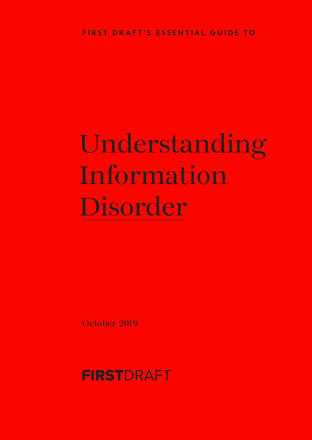
Claire Wardle returns to a topic she already covered in “Information Disorder: An interdisciplinary Framework for Research and Policy”, written for the Council of Europe with Hossein Derakhshan. Here, she reiterates that the term “fake news” should not be used, because it is not precise and is used by politicians to attack journalists. Instead, more specific terms can be used, with “information disorder” as an umbrella term.
We can distinguish:
- disinformation - intentionally false content designed to cause harm;
- misinformation - false content shared without realising it is false or misleading;
- malinformation - genuine information shared to cause harm.
Since the distinction is based on intent, the same piece can be created and first shared as disinformation and then shared by others as misinformation.
Wardle notes an evolution since 2016, with an increasing “weaponization of context”, using warped and reframed genuine content, which works better to persuade people and is less likely to be picked up by social networks AI systems that are part of fact-checking efforts.
She then distinguishes seven categories, to be considered as examples or a spectrum. Each of them gets a chapter:
- satire or parody, that has no intention to cause harm, but potential to fool;
- false connection - headlines, visuals, or captions do not support the content (e.g. clickbait);
- misleading content - misleading use of information to frame an issue or individual (e.g. massaged statistics, photos cropped to change their meaning);
- false context - genuine content shared with false contextual information;
- imposter content - impersonation of genuine sources (e.g. a website using the BBC logo without being the BBC, or screenshot of fake tweets);
- manipulated content - genuine information or imagery manipulated to deceive (e.g. altered photos or videos);
- fabricated content - new content 100% false, designed to deceive and do harm.
The content of this article can be used according to the terms of Creative Commons: Attribution-NonCommercial 4.0 International (CC BY-NC 4.0) . To do so use the the wording "this article was originally published on the Resource Centre on Media Freedom in Europe" including a direct active link to the original article page.

